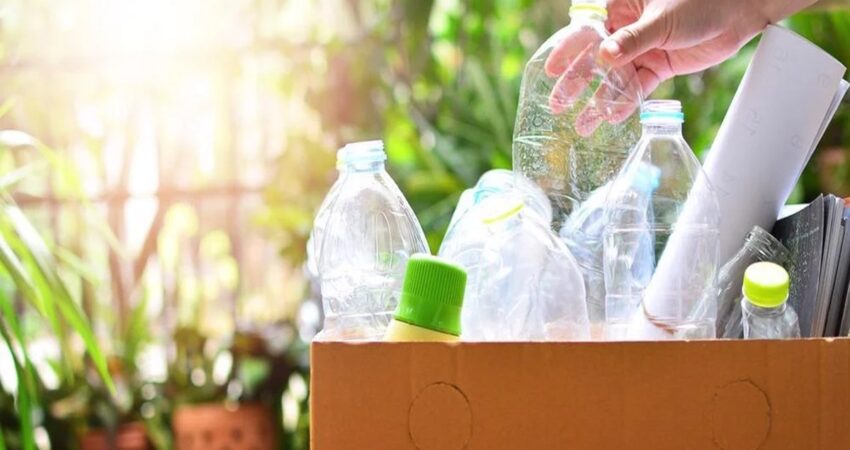What is plastic packaging? Examples and Cost

After the invention of plastic in 1907, it has brought a revolution in the world of packaging. Its characteristics like strongness, durability, better resistance to wear and tear, lightweight, and affordability make it a perfect choice for plastic packaging.
Over the years it has made a stronghold in the market and has overtaken the packaging market of different materials like glass, fabric, paper, and more. It is one of the most energy-efficient materials that is commonly used in packaging.
Types of Plastic Packaging
There are different types of plastic packaging available in the market. They are chosen as per the requirements. Here you will find the list of varieties with different examples of plastic packaging:
Low-Density Polyethylene (LDPE)
LDPE, or low-density polyethylene, is favored for its flexibility, light weight, and moisture resistance. These qualities make it an ideal material for packaging various food and beverage products. Additionally, LDPE is easily recyclable, making it a sustainable choice for companies looking to reduce their environmental impact. Some of its characteristics include easy to produce, transparent, flexible, resistant to oils, and more. This type of plastic is recyclable.
Examples of LDPE packaging include garbage bags, coating over the cups and cartons, packaging bags for frozen produce, flexible lids over the boxes and cups, shipping envelopes, and more.
High-Density Polyethylene (HDPE)
HDPE is among the widely produced and used types of plastic in packaging. Its characteristics include translucency, rigidity, and chemical resistance. Its high tensile strength makes it more durable in comparison to other forms. HDPE is arecyclable type of plastic packaging.
Examples of HDPE packaging include beverage bottles, cosmetic, and toiletries tubes and bottles, grocery bags, and more.
Note: Both HDPE and LDPE are less energy efficient in comparison to other forms of plastics.
Polypropylene (PP)
Materials that have higher safety concerns often use polypropylene or PP. It has a high melting point, is chemically resistant, and has lower moisture content. All these properties make it perfect to hold hot liquids.
In medicine bottles, yogurt containers, and for bottle caps, among other applications, plastic packaging of the PP type is used primarily.
Note: Polypropylene breaks down with UV exposure. So its usage should be avoided in things that have high UV exposure.
Polyethylene Terephthalate (PET, PETE)
If you are looking for a plastic that has better moisture and gas barrier type of properties, then PET is a perfect choice. PET is break-resistant, transparent, and smooth in appearance.
Examples of PET plastic packaging include soft drink bottles, beer and juice bottles, microwave meal trays, and more. The recycled PET plastic is widely used in carpet and textile-making industries.
Polyvinyl Chloride (PVC, Vinyl)
PVC is known to be the world’s third most-produced type of plastic. Its high durability, and stable physical properties like resistance to oil and chemical resistance make it a perfect choice for many manufacturers.
Some examples of PVC include Pipes, clamshells, shrink wraps for medical uses, meat packaging, and more.
Note: PVC is considered to be the least environment friendly. It is mostly recycled into building materials.
Polystyrene
Its high melting point and moisture-resistant properties make polystyrene well-known. It has a low recallability in comparison to other types. Mostly if recycled it is turned into electrical outlets and mouldings.
Some examples of polystyrene include single-use cutlery, poultry trays, egg cartons, protective packaging for electrical goods, and more.
PETG (Copolymer Polyethylene Terephthalate Glycol)
PETG exhibits transparency and glossiness, toughness, and affordability as its properties, and it does not contain BPA.They has a low forming temperature that makes it easily vacuumed.
It is mainly used for medical tubes, cosmetic tubes, blister packs for packaging, and more.
How Much Does It Cost to Make Plastic Packaging?
By keeping the packaging costs within a range of 10-40% of the total cost of product manufacturing, companies can ensure that they are allocating a reasonable amount of resources to packaging without overspending or compromising on quality. You can contact a reliable packaging supplier and negotiate as per your demands.
Plastic Packaging Rules
Plastic manufacturers need to follow various rules and regulations and should have various licences to produce different types of plastic in India. Some rules include:
Pollution NOC (CTE and CTO from SPCB)
Every manufacturing unit needs to take NOC from the Pollution Control Board in their state. This requires two important consents, including CTE (Consent to Establish) and CTO (Consent to Operate)
Plastic waste management rules, 2016
Manufacturing units need to obtain consent under Plastic Waste Management Rules, 2016. It is passed by the GOI to minimise plastic waste and ensure the segregation of waste at the source.
EPR action plan
Plastic manufacturing units need to comply with the EPR action plan. In 2019, CPCB formulated EPR action plan under PWM Rules.
Conclusion
If you are looking for plastic packaging tube manufacturers in India, consider Sitons Propack. We are a leading manufacturer of cosmetic and pharmaceutical plastic tubes in India. You can get them customised in different shapes and sizes and get them printed as per the requirements. Mostly the materials we use include LDPE, HDPE, and EVOH



One reply on “What is plastic packaging? Examples and Cost”
What is Glass Packaging | Sitons Propack
[…] there are many types of packaging available in the market like glass packaging, paper packaging, plastic packaging, and more. Each type has its advantages and disadvantages. Today we will deal with the Glass […]